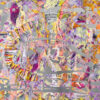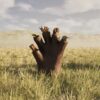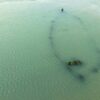
Fragments Aligned
Sohrab Crews’ experience of a range of different geographical and cultural contexts has had a strong bearing on his work, as has his significant interest in post-war European avant-garde art, American painting and sculpture, and mixed-media practices of all kinds. His own work manifests the recurrent themes of order and control, structure, colour and expressive intensity, notably through his ongoing experimentation with a wide range of ideas, mediums and techniques.








